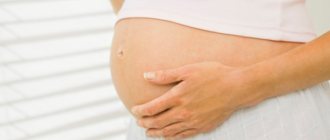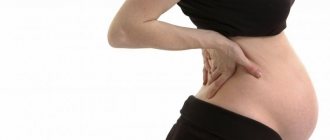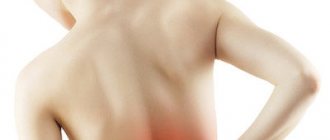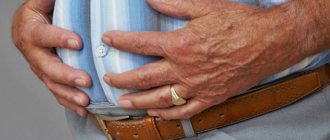Why does my stomach hurt above my navel?
One of the common reasons for visiting a medical facility or calling emergency services at home is pain above the navel. This symptom does not allow a quick diagnosis and requires additional assessment of body functions. It may be associated with the development of pathologies of several internal organs or indicate temporary and non-hazardous processes for health, and therefore life. You should find out why your stomach may hurt, what signs complement the picture of diseases, and what to do when they appear.
What organs are located in the area above the navel?
To understand why the stomach hurts above the navel, you need to clarify which internal organs are located in this area and above (this place has other names - upper abdomen, epigastrium, epigastrium) or near it. The list is quite large :
- stomach, its part corresponding to about a third of the organ;
- one of the lobes of the liver;
- gallbladder with its ducts;
- pancreas;
- partially the kidneys (their top);
- spleen;
- cardiac pericardium;
- sections of the intestine - part of the duodenum, the transition from it to the jejunum;
- areas of large vessels - vena cava, abdominal aorta;
- nerve endings that form the celiac plexus.
Human anatomy suggests that pain above the navel can result from a number of serious dysfunctions of any of the organs located in the named area of the body or slightly above it. Therefore, such a signal from the body cannot be ignored. It is necessary to accurately determine the causes of pain above the navel, and accurately follow all the doctor’s instructions during the treatment period.
Gastritis
Pain above the navel is one of the accompanying gastritis. It is characterized as acute, paroxysmal, often accompanies the patient for a long period of time and does not go away on its own. The stomach hurts above the navel with gastritis immediately after eating food and in cases of a long break between each meal. The picture of the disease is complemented by periodic heartburn, vomiting (observed directly during eating), belching, a feeling of sour taste in the mouth, increased salivation, and disruption of intestinal function. Pain above the navel in such situations is accompanied by a feeling of weakness, increased sweating, changes in heart rate, a slight increase in the patient's temperature, and a lack of desire to eat.
The pain above the navel that accompanies gastritis becomes less pronounced or disappears after a course of therapy. The patient is recommended to switch to dietary nutrition, he is prescribed complex treatment - antibiotics, drugs to reduce the secretion of gastric juice, coatings, painkillers, enzymes and cytoprotectors.
Ulcerative processes
A person has pain above the navel in the abdomen due to gastric and duodenal ulcers. He can describe the manifestations of pain like this :
- arise in the epigastrium, can radiate to the lumbar region, chest, back, descend low or rise from the initial focus;
- sensations often appear at night;
- soreness refers to “hungry”, that is, it becomes bright a few hours after eating;
- may appear at other times - early (an hour later) or late (two hours later) after feeding;
- A characteristic sign of pain in the area above the navel is its seasonality.
Nausea, vomiting, complete reluctance to eat, painful appearance, thinness are additional signs indicating the development of an ulcerative process in the digestive system. The choice of treatment for the disease depends on the development of the pathology; it can be medicinal or surgical.
Possible complications
Some pathologies do not pose a mortal threat, but reduce the quality of life, while others are fraught with death. These include appendicitis. If surgical amputation of the inflamed vermiform branch of the cecum is not performed in time, it will spontaneously open.
Peritonitis often leads to death. Pain caused by a hernia and localized above the navel from above requires rapid tissue reduction. Otherwise, there is a high risk of developing necrosis. Intestinal obstruction also poses a mortal threat. If it is not eliminated, gastric damage and systemic intoxication of the body are possible.
Oncological diseases of the stomach
The reason why the abdomen hurts above the navel may be stomach cancer. At first, the problem is barely noticeable, then, over a short period of time (several weeks), it becomes pronounced and stable.
Patients determine pain in the navel area during the development of an oncological process based on several properties. They can differ significantly in each specific case, and have individual characteristics :
- the abdomen in the navel area aches, the pain is not intense;
- the pain becomes sharp, stabbing in nature, its occurrence is not associated with the digestion process, and can occur above the navel at any time of the day;
- the area around the navel and above hurts acutely and constantly, sometimes there are short periods of respite.
For all patients with stomach pain above the navel due to stomach cancer, the doctor prescribes medications to relieve and alleviate the symptom. The medicine should be used regularly, and not just at a time when symptoms intensify. To control abdominal pain above the navel, the doctor prescribes several painkillers to take at the same time.
What to do if it hurts above the abdomen
There are several separate organs in the human stomach, each of which can become diseased.
If the pain is higher than the abdomen, in other words, if you have pain in the upper part of the peritoneum, there may be several possible explanations for this. But in order to understand what needs to be done in each specific case, you need to determine the exact location and nature of the pain. But really – what? Above the abdomen is pain in the very top of the abdomen, which is almost always associated with the stomach? Or pain in the sternum - where your own organs are also located.
Or do you mean pain in the solar plexus - in the pit of the stomach? If it hurts above the abdomen, this is too vague a concept.
Therefore, today we will limit ourselves to talking only about the upper abdomen and epigastric region
Why does it hurt above the abdomen in the upper abdomen?
As already mentioned, if the stomach hurts at the very top, exactly in the middle, without shifting to the left or right, then the problem is almost always in the stomach. We can talk about gastritis or an ulcer.
Smoking, alcohol abuse, spicy food, toxic substances entering the stomach, bacteria - all this leads to a deterioration in the condition of the gastric mucosa. This is how gastritis begins, which manifests itself with dull arching pain in the epigastric region.
Gastritis pain is not very intense, and therefore a person usually prefers to endure it and not consult a doctor. The development of gastritis without treatment continues, and this leads to a significant deterioration of the situation over time.
By the way, sometimes mild pain in the epigastric region above the abdomen can indicate a stomach ulcer or even cancer. Therefore, these pains should not be left unattended.
Severe pain in the upper abdomen is usually a sign indicating the presence of a stomach ulcer. Most often, an attack occurs on an empty stomach, when gastric juice affects the area affected by the ulcer. By the way, an ulcer is an erosion of the mucous membrane, unlike gastritis.
Attacks of stomach pain due to an ulcer may recur for several weeks, and then they stop again. Usually, an ulcer responds well to treatment, but in the future, with poor diet or lifestyle, it may reappear. Or not show up.
The ulcer behaves completely unpredictably.
Acute cutting pain above the abdomen is a very dangerous symptom, which usually indicates the presence of a perforated ulcer and perforation of the stomach.
In other words, the ulcer has “eaten” a hole in the wall of the stomach and now its contents partially fall out into the abdominal cavity. This is a very dangerous condition that requires immediate surgical attention.
Otherwise, the patient faces the development of peritonitis and death.
Only a doctor can give an exact answer to the question of why it hurts above the abdomen. He must prescribe the treatment necessary in each specific case.
If it hurts above the abdomen - in the epigastric area
Now let's briefly list the diseases that cause pain in the epigastric region. This:
- pain in the right hypochondrium occurs with damage to the diaphragm, duodenum, esophagus, dysfunction of the liver and bile ducts, pancreas, problems with the cardiac and pulmonary systems;
- pain in the left hypochondrium – hiatal hernia, pancreatitis. Discomfort occurs with constipation, diseases of the spleen, large intestine, as well as problems with the lungs, pyelonephritis, and disorders of the urinary system;
- acute appendicitis;
- myocardial infarction in gastralgic form;
- inflammatory processes (pleurisy) or accumulation of air (pneumothorax) in the pleura;
- purulent peritonitis (infection of the abdominal region and intestinal paresis);
- hepatic colic;
- infectious diseases;
- intoxication;
- disease with Crimean hemorrhagic fever (caused by ticks);
- typhus.
As you can see, it is quite difficult to even list all the reasons why a person may have pain above the abdomen. Therefore, if pain appears in this department, do not try to self-medicate. This can only make the situation worse.
What to do if you have pain above your stomach
With regular pain in the area located above the abdomen, it is necessary to determine the nature of the pain and its location as accurately as possible. And also accompanying symptoms, for example, upset stool, nausea, vomiting - how often, fever, etc. You will need all these symptoms to give your doctor an accurate clinical picture of a possible disease.
If you experience sharp, severe pain above the abdomen that does not go away within 20 minutes, try to find the most comfortable position for yourself and call an ambulance. Do not take painkillers until the doctor arrives - this may complicate the diagnosis.
If you experience regular dull, aching or burning pain in the upper abdomen, be sure to take the time and consult a gastroenterologist for advice.
Source: https://www.medmoon.ru/med/bolit_vyshe_zhivota.html
Duodenitis and gastroduodenitis
Inflammation of the mucous membrane of the duodenum is called duodenitis. If the process also affects the stomach, the patient is diagnosed with gastroduodenitis. The diseases are characterized by largely similar manifestations. The symptom is no exception - pain just above the navel. Patients describe its features :
- most often occurs on the right side of the navel;
- feels dull and aching in the hypochondrium area;
- when the process worsens, it is first observed above the navel in the center, the area where the duodenum is located hurts;
- The duration of the vivid manifestation of the symptom is up to 10 days, then a period of remission is observed.
Pain above the navel in patients occurs with the development of a chronic form of the disease; it is nocturnal and “hungry” in nature. If duodenitis and gastroduodenitis develops in a child, the process is not always associated with pain.
The manifestations of pain are reduced in special positions of the person’s body - if he turns over on his left side, squats or lies “in a ball”, bringing his knees and elbows as close as possible. You can reduce the appearance of the symptom by switching to a diet and if you start taking medications. As prescribed by a doctor, it is necessary to use antispasmodics and painkillers, antacids, and sorbents.
Causes of pain
Pain above the navel is a common symptom with problems with the upper gastrointestinal tract. At a young age, with initial manifestations in 80% of cases, its cause is functional disorders of the digestive system: functional dyspepsia, biliary dyskinesia or irritable bowel syndrome. Only 20% of such patients are primarily diagnosed with organic pathology (acute or chronic gastritis, or gastroduodenitis, gastric and duodenal ulcers, cholecystitis, pancreatitis, tumors, and so on). In turn, organic pathology predominates in older people.
Functional dyspepsia
There are two forms: postprandial distress syndrome and epigastric pain syndrome. In the second case, there will be a pressing pain above the navel of moderate intensity, possible heartburn, belching, a feeling of heaviness in the stomach, bloating and early satiety. Sometimes there is vomiting. It is worth noting that functional dyspepsia, like any functional malfunction in the body, is a diagnosis of exception.
Dyskinesia
It is observed in hypokinetic and hyperkinetic variants. The first form causes dull aching pain of moderate intensity in the right hypochondrium. Painful sensations in the hypomotor form are quite long-lasting (several hours). The hyperkinetic variant is characterized by short-term attacks of pain (up to 1 hour). Patients complain of sharp pain under the right rib, abnormal bowel movements (constipation or disorders), a bitter taste in the mouth, and weakness.
Irritable bowel syndrome
It is characterized by pain above and at the level of the navel (mesogastric, right and left lateral regions), below the navel (right and left iliac regions). In addition, patients are concerned about abdominal bloating, seemingly incomplete bowel movements, an urgent urge to defecate, and stool disorders (constipation, diarrhea, their alternation). A feature of irritable bowel syndrome is that the symptoms disappear after defecation.
Gastritis
The symptoms are quite similar to those of functional dyspepsia, they are just more pronounced. This is especially noticeable in the case of type B gastritis (associated with Helicobacter Pylori). The pain is localized in the epigastric (epigastric) region, is very pronounced, is paroxysmal and diffuse in nature, causes severe discomfort to the patient, and is accompanied by heartburn. Gastritis with low acidity (type A) is characterized by dull, pressing, fairly long-lasting pain.
Peptic ulcer
With a stomach ulcer, the symptoms are similar to gastritis, but the pain is associated with food intake and is more localized. With a duodenal ulcer, pain occurs in the area of the right border of the epigastrium. Patients complain of hunger attacks at night. Their intensity decreases 1 -1.5 hours after eating.
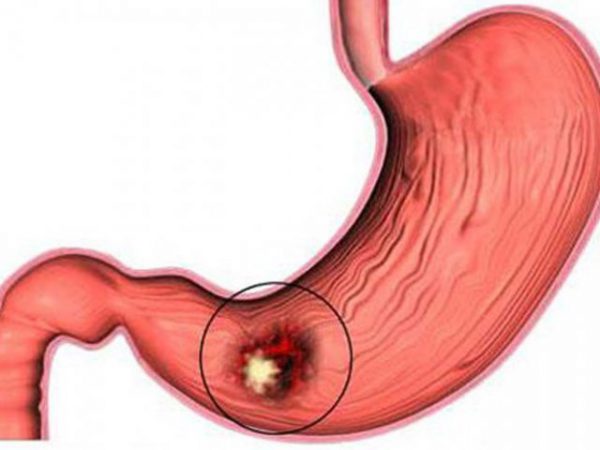
Tumors
The neoplastic process rarely manifests itself in the early stages; symptoms appear quite late in its development. Pain and other manifestations are very diverse and can have different localizations.
Calculous and non-calculous cholecystitis
Accompanied by attacks of acute pain in the right hypochondrium with vomiting, stool disorders, fever, and deterioration in general condition. The chronic form of the disease produces periodic painful attacks localized under the right rib.
Pancreatitis
Pain syndrome can appear with inflammation of the pancreas, in which case the person is confirmed to have acute or chronic pancreatitis. It is the particularities of the development and localization of foci of inflammation that determine the location of pain - above and below the navel, in the right or left hypochondrium, back, lower back, and lower sternum.
Patients note features characteristic of the symptom:
- pain above the navel occurs as a result of eating;
- does not disappear in the fetal position, intensifies if you lie on your back;
- soreness may occur behind the sternum and then spread;
- The nature of the manifestations is special - they are burning, baking, cramping, unbearable.
If the pain during pancreatitis was severe and then disappeared, this phenomenon can be caused by a necrotic process that has developed in the pancreas.
Pharmacy medications - non-steroidal analgesics, antipsychotics, tranquilizers - help relieve symptoms. Treatment is prescribed and monitored by a doctor.
Nature of pain
Their character can tell a lot about the possible causes of pain.
Acute pain syndrome
Acute pain, which quickly appears and grows, deserves special attention. Sharp pain in the epigastrium, similar to a stab with a dagger, is considered a characteristic sign of perforation of a stomach or duodenal ulcer. In this case, pronounced muscle tension of the anterior abdominal wall is observed.
With intestinal obstruction, cramps and colic appear in the abdomen. Usually they are localized not only in the upper sections, but throughout the entire abdominal cavity. Flatulence, impaired passage of gases and feces, and vomiting are also observed.
With thrombosis of the vessels supplying the digestive tract, the pain is intense, colicky, diffuse. Tension of the abdominal muscles is detected, fever may develop and black stools may appear.
With dissecting aortic aneurysm, pain in the upper abdomen is observed in 25% of cases. It is intense, constant, cannot be relieved by antispasmodics and analgesics, and radiates to the back. Sometimes in the epigastric region, slightly to the left of the center, you can feel a pulsating formation. Aortic aneurysm is accompanied by a persistent increase in blood pressure.
Biliary colic is associated with the movement of a stone in the cavity of the gallbladder or cystic duct, with a violation of the outflow of bile. It develops acutely, after eating fatty foods or against the background of a bumpy ride, and lasts from a quarter of an hour to 6 hours. Most often, the patient can clearly point to a painful point on the border with the right costal arch. Sometimes jaundice, nausea and vomiting develop against this background.
Rupture and infarction of the spleen are accompanied by acute pain in the left hypochondrium and below, which radiates to the left shoulder.
Note. Abdominal pain in children has some characteristics. In particular, with the development of acute appendicitis, discomfort is first localized in the epigastrium and near the navel. Only after a few hours the pain shifts to the right lower abdomen.
Chronic pain
Chronic pain in diseases of different organs is often similar to each other, especially when it is mild. Let's consider the most typical variants of pain syndrome in different conditions.
Gastritis is characterized by burning or dull pain in the epigastrium and left hypochondrium after eating. In the presence of esophageal reflux, the burning sensation moves behind the sternum. Pain in the epigastric region on an empty stomach is more typical for peptic ulcer disease. If the ulcer is located in the duodenum, then discomfort is also observed in the right hypochondrium.
Cholecystitis manifests itself as clearly localized pain in the right hypochondrium, at the very edge of the ribs. Unpleasant sensations occur after eating and are often accompanied by nausea.
With hepatitis, pain rarely occurs, only with significant enlargement of the liver. Its capsule stretches, and a dull aching pain appears under the ribs on the right. In such cases, the liver may even visually protrude from under the costal arch.
Cholecystitis
Inflammation of the walls of the gallbladder is cholecystitis. The nature of the painful manifestations makes it possible to diagnose the pathology and its form. The intensity of the symptom depends on the degree of damage to the gallbladder by the inflammatory process.
Patient complaints can be expressed in several “average” definitions:
- pain occurs above the navel on the right, then can be felt in the back, lower back, peritoneum, right arm, shoulder blade;
- the sensations acquire a constant, aching character, be cramping, described as colic, then give way to a dull pain.
The patient develops additional symptoms - itchy skin, pallor, yellowing of the skin, sclera, abnormal bowel movements, nausea, bitterness in the mouth, dizziness.
To relieve pain, treatment is prescribed, which depends on the cause of cholecystitis. If the inflammation is caused by the presence of stones or sand in the bile ducts, special drugs are used to dissolve them or a surgical method to remove solid deposits. All patients are prescribed pain-reducing tablets (analgesics, antispasmodics), choleretic agents, antibiotics, and enzymes.
Other causes of pain above the navel
Situations when the stomach hurts in the center (at the navel and above), sensations are observed in the epigastric zone, may indicate the presence of other diseases and conditions:
- inflammatory processes in the liver (viral hepatitis);
- increase in the size of the spleen;
- the formation of a hernia in the broad abdominal or umbilical muscles;
- osteocondritis of the spine;
- myocardial infarction;
- development of abdominal aortic aneurysm;
- renal impairment;
- intestinal colic;
- diseases of the female reproductive system.
The appearance of a symptom may be associated with a lack of nutritional culture or a “harmful” diet, the presence of stress, increased physical activity, and pregnancy.
General recommendations for pain above the navel
If your upper abdomen hurts, you should carefully monitor any symptoms that arise. Dangerous and requiring medical attention are :
- prolonged persistence of pain after taking painkillers;
- presence of blood in vomit or stool;
- difficulty breathing and swallowing reflex.
The main symptom, which is accompanied by severe weakness, increased body temperature, dizziness and sweating, should also not be ignored.
Found an error? Select it and press Ctrl+Enter.
source
Stomach hurts when pressing above the navel
Pain above the navel, which appears suddenly or has been present for some time, may indicate that symptoms of a certain disease have appeared in the body. It could be the first serious wake-up call.
Pain, if it is severe or constantly aching, gives a person a lot of trouble, he is forced to constantly be distracted by it and cannot calmly work, walk, sit, etc. Therefore, here you need to immediately begin to solve this problem by finding out why the symptom arose.
Causes of pain in the area above the navel
The reasons why a person experiences pain in the navel and slightly above are quite varied. In this area there are two vital parts of the gastrointestinal tract - the stomach and the upper part of the duodenum.
Painful sensations that arise in this place may indicate the progression of the disease in one of these organs or the beginning of its development. Most often, the source of discomfort that appears in the area just above the center of the abdomen is inflammatory processes in the gastrointestinal tract.
Such ailments include:
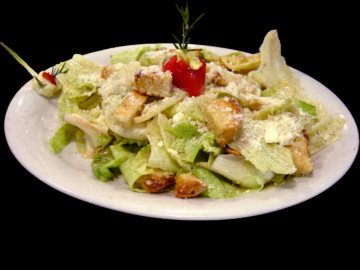
Gastroduodenitis. The pain, throbbing, resembles contractions and is concentrated in the right side of the peritoneum. It may appear above the navel 2-3 hours after eating. Sometimes accompanied by a feeling of nausea and swelling of the upper part of the peritoneum. Painful sensations stop gradually after a person begins to regularly take small portions of the right food and medications prescribed by a doctor. Sometimes eliminating the main cause of the disease (irregular meals, fast food, etc.) already leads to getting rid of the problem;- Duodenitis. There are attacks of dull pain, sometimes there are sharp, sharp ones (they happen infrequently). There is a state of nausea and a complete lack of appetite, after eating there is a feeling that the stomach is bloated, when the epigastric region is exposed, severe pain appears;
- Acute gastritis. This disease is characterized by the appearance of dry mouth, a gray coating forms on the tongue, the skin turns pale, frequent diarrhea begins, there may be vomiting, there is often a constant state of nausea and general weakness;
- Ulcer of the stomach and duodenum. Pain increases when a person is hungry or between meals. In cases where he is full, pain does not occur so often. Side effects such as nausea and vomiting may also be present;
- Pancreatitis. With this disease, pain is observed in the upper right side of the abdomen. If the head of the pancreas is inflamed, then the pain will appear in the left region, if the back part (tail) is inflamed, then right above the navel. Additional symptoms include frequent bowel movements with the release of fat and mucus, dizziness, nausea, great weakness of the whole body, and frequent vomiting. This cause of discomfort can occur not only in adults, but also in children;
- Stomach cancer. If we consider all the causes of pain above the navel, then this is one of the most dangerous. At the initial stage, the disease's symptoms are similar to gastritis. Then, as the disease progresses, the patient experiences distension in the left side, complete apathy, lack of appetite and interest in life, and sudden weight loss;
- Soreness above the navel often signals inflammation of an internal organ. There are many organs in the peritoneum that can provoke such pain - inflammation of the bladder, ovaries, inflammation of the pleura (pleurisy), inflammation of the liver (hepatitis), cholelithiasis, etc.;
- The appendix can also cause pain above the umbilical opening. Here the pain changes its “position”. At first it is felt slightly above the middle of the abdomen, and then radiates down to the right side. The abdominal muscles are constantly tense; when moving, a person feels increased discomfort;
- A common cause of pain in the umbilical region in people is ordinary overeating, indigestion, abuse of fatty foods or smoked meats, alcohol poisoning;
- There are cases when pain just above the navel occurs in pregnant women. This occurs in cases where an umbilical hernia begins to develop in a pregnant woman and the growing fetus stretches the rounded ligament of the liver. The causes of pain above the navel in men, women and children are largely similar. But a child’s digestive system is somewhat different from an adult’s. Therefore, usually complaints of pain in the umbilical area or just above the central part are most often associated with problems in the digestive system. In children, discomfort in the navel area is most often observed for the following reasons:
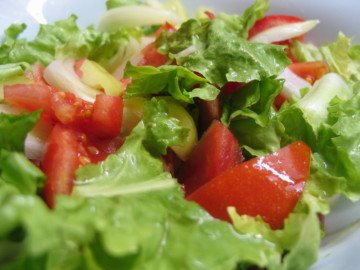
Lack of adult control over the child’s proper nutrition – the diet is unbalanced and food is taken irregularly. Abuse of harmful foods (fast foods, smoked foods, sweets, carbonated drinks, etc.). The child does not eat well and is allergic to certain foods;- Some children have problems from birth with lactose and dairy intolerance. And even with a small content of these substances in some products, the baby may experience discomfort;
- The baby may sometimes experience functional tenderness in the tummy. This is not due to physical problems, but may be due to severe mental disorders and experiences.
Otherwise, the reasons why a child’s stomach hurts at the top are the same as in adults.
Treatment methods
If you experience persistent or recurring painful sensations that do not go away within three hours, you should urgently seek medical help. Before the patient begins treatment, it is very important to find out the cause of the disease and make an appropriate diagnosis.
There are cases when the patient requires urgent hospitalization, in which case surgical intervention cannot be ruled out. If the patient’s health is not seriously threatened, the doctor may limit himself to recommendations - write a prescription and send him home. When the disease occurs due to infection, the patient will undergo a course of rehabilitation, taking antibiotics, sorbents, antispasmodics, painkillers, and proper gentle nutrition will be prescribed.
If pain in the umbilical region arose due to psychological trauma or was provoked by a strong emotional disorder, then such a patient is recommended to take bed rest for a while and take medications that relieve intestinal spasms.
When cancer is diagnosed, the patient undergoes removal of the diseased organ, after which he will have to undergo chemotherapy or radiation therapy. The success of cancer treatment always depends on timely consultation with a doctor. The sooner it is detected, the more favorable the outcome will be.
If there is slight discomfort in the umbilical area caused by overeating, a person is prescribed to take activated charcoal and enzymatic preparations. Self-medication in case of pain above the navel is extremely dangerous, as this can lead to undesirable consequences. After all, pain in this place can be an indicator of various diseases, including very serious ones, sometimes leading to sad consequences.
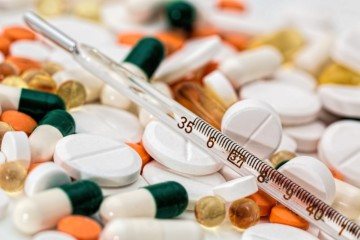
Therefore, you should not start treatment without consulting a doctor! For example, with advanced gastritis, an ulcer may appear. With an ulcer, internal bleeding may occur, which will become known only after taking stool for analysis or after a post-mortem autopsy. A disease such as volvulus has very serious consequences.
It is necessary to seek help from a doctor as soon as possible. In case of exacerbation of appendicitis, surgical intervention is also indispensable. A timely operation saves a person’s life!
The appearance of signs of an umbilical hernia requires urgent hospitalization, as necrosis of the strangulated intestine may occur, and then necrosis and possible death. An aneurysm in the abdominal cavity is considered a dangerous disease and its treatment requires only surgical intervention.
For cystitis, a course of antibiotics is prescribed. Inflammation in the pelvic area can be of either an infectious nature or a tumor. So you can’t do without getting tested. The examination of this part of the human body must be taken seriously. But large uterine fibroids are subject to amputation.
When uterine cancer is diagnosed, extirpation is performed (the uterus is removed along with the ovaries and appendages), and a course of chemical radiation therapy is carried out. From all of the above, it is easy to conclude that there is no need to self-medicate, it can be dangerous. After all, you first need to establish the reason why it hurts above the navel, and only then act. This especially applies to children!
Prevention of pain above the umbilical zone
Pain in the abdomen above the navel is, first of all, a signal to a person that he urgently needs to pay attention to his physical health and prevent the situation from reaching a critical state. This is especially true for acute, aching and frequently recurring attacks of pain.
If we analyze all the causes of discomfort that are outlined above, it becomes clear that prevention primarily lies in proper nutrition. The digestive system cannot constantly receive dry and unhealthy food without an appropriate regime. Sooner or later it will malfunction and then there will be pain in the stomach above the navel.
You can’t expect the discomfort to go away on its own. In such cases, it is necessary to seek help from a doctor and strictly follow all his instructions in order to avoid serious complications!
Abdominal pain in men and women causes a lot of inconvenience and discomfort, and this manifestation also indicates additional symptoms of certain diseases.
Often patients complain that the pain is localized above the navel and are very worried about this.
It is the pain above the navel that indicates possible very serious pathologies. The article describes why the stomach hurts above the navel, causes and symptoms.
There are many reasons for the appearance of pain above the navel, and when making a diagnosis, the doctor must take into account not only the nature of the manifestation, but also other symptoms that may appear.
Anyone who feels pain in the abdomen wants to find out what it could be about, even before visiting the doctor.
If you have prolonged and severe pain, you should definitely undergo an examination, do not tolerate it and do not wait for the symptoms to pass.
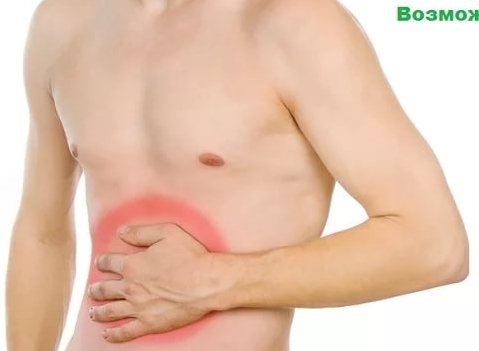
Lump near the navel
A lump near the navel is a common occurrence in people of any age.
And this is understandable, because in the retroperitoneal space there are many systems and organs (spleen, stomach, gall bladder, colon, jejunum, ileum, greater omentum, upper part of the kidneys and ureter, digestive and urinary systems). Each organ can fail, manifest itself with pain, swelling, swelling, or compaction in a certain area of the abdomen.
It’s not scary if the protrusion is caused by muscle strain. If you experience bloating, hollowness of a separate part of the abdomen, or other symptoms (colic, diarrhea, vomiting, high temperature), then you should probably see a doctor and undergo an examination.
Protrusion is far from harmless; perhaps it is a signal that urgent measures need to be taken to avoid complications later. Most often localized in the right side of the abdomen. Let's consider the reasons for the appearance from all sides: right, left, above, below and when urgent treatment is required. You can no longer delay going to the doctors.
Women's problems
Pathologies or reasons for the appearance of lumps in women are often gynecological in nature. Doctors advise not to wait for severe colic or other signs of pathology to appear: nausea, bleeding and to go to the clinic.
Provokes tumors in the abdomen in women:
- adhesions in the uterine cavity;
- torsion of the appendages, when a compaction is observed in the left, right part of the navel, in addition there is nausea, vomiting, throbbing pain, when surgical intervention is no longer possible;
- ovarian cyst with compaction as the tumor reaches an impressive size;
- menstrual irregularities.
Treatment will depend entirely on the type and size of the tumor - conservative or surgical.
It is not uncommon for sutures to harden in women after a cesarean section. Of course, the resulting lump does not always indicate pathology. But a caesarean section is a complex operation in which doctors have to cut tissue in the peritoneal area. Next is to seal the honey. materials, and fabrics are sewn with a ligature.
During the recovery period, the sutures are covered with scar tissue, but sometimes a growth appears in the peritoneum due to an autoimmune reaction, the use of low-quality materials, tissue infection, and the development of an abscess under the skin.
It is suppuration that can become a dangerous phenomenon in the event of damage to tissues under the skin, cell death, and mixing of dead tissue with keratinized skin particles. Bacteria may enter, which can lead to infection, modification of structures and compaction of tissues. Additionally, itching, burning, and ichor appear in the middle square of the peritoneum.
Dissection of the lymphatic channels during surgery can also lead to a lump above the suture. In the case of non-fusion of the damaged lymphatic channel, fluid moves into the free space in the peritoneal cavity filled with lymph.
A similar phenomenon can occur after laparoscopy, in the case of poorly performed surgery on the uterus and appendages. One way or another, the dissected tissue in the peritoneal cavity is stitched and secured with threads. Lack of quality or inexperience, the negligence of the surgeon leads to complications, infection of wounds and sutures, and the development of a bacterial infection.
In the best case, scar tissue forms under the skin, in the worst case – active proliferation of cells in this area, the formation of a keloid scar due to infection, the development of inflammation.
Women need to closely monitor their stitches after surgery:
- follow preventive measures and doctors’ instructions;
- Treat seams regularly with antiseptic solutions. Fukortsin, brilliant green);
- stick the patch onto the surface of the seam.
Alarm bells should be a reason for an urgent visit to the gynecologist: severe pain and colic at the incision sites, oozing ichor from the wound with a serous smell of rot, high fever, redness and swelling at the stitching sites, unpleasant vaginal bleeding with itching, burning, pain.
An examination is required and, most likely, an operation to clean the sutures in case of suppuration.
Pregnancy
As the fetus grows, the skin of women during pregnancy stretches, but some tension in the peritoneum does not pose any particular danger. This often happens due to underdeveloped abdominal muscles and excessive tension.
However, sometimes the reasons are:
- appendicitis accompanied by colic, pain;
- gastroduodenitis with pain in the upper quadrant of the peritoneum;
- cystitis with burning sensation, pain when urinating, retention and stagnation of urine;
- umbilical hernia, a common occurrence in the postpartum period with the appearance of protrusion.
Even if the protrusion does not hurt or cause any particular discomfort, you should consult a doctor. So, for example, with oncology, the tumor does not hurt and may not make itself known for a long time. Meanwhile, it is dangerous due to its transformation into cancer and a malignant form, when the consequences can become completely irreversible.
It happens that the hernia is reduced on its own when taking a horizontal position. But sometimes it forms as a result of a cesarean section and becomes uncontrollable when medical intervention is already inevitable. Additionally, there is acute cramping pain, high fever, diarrhea, nausea, and vomiting.
Signs contribute to increased intestinal tone together with the uterus and can lead to miscarriage and premature birth.
Any deviations from the norm should be a reason to contact a gynecologist. Women should not ignore even minor unpleasant symptoms or visual changes in the navel area.
In children
The most common occurrence in a child from birth is an umbilical hernia or a hard lump that does not disappear upon palpation in the peri-umbilical area. Additionally, babies kick their legs and refuse to eat. Colic and bloating are observed. There are strangulated and reducible hernias. In boys it is usually the groin, in girls it is usually the umbilical. In any case, treatment and the help of a surgeon are required.
Mothers must necessarily treat the umbilical cord up to 4 times every day with antiseptics (Chlorophyllipt, Furacilin, Zelenka) until complete healing. Babies should only be bathed with the addition of a weak solution of potassium permanganate. Complications, infection of the umbilical zone can lead to the development of peritonitis, sepsis, and phlegmon.
Treatment measures
Methods are selected exclusively by the attending physician. It is possible to prescribe medications based on the results of diagnostics, other studies, tests, blood and urine tests. So, for example, if a hernia is detected, a correction is required, which means surgical intervention. The main thing is not to give the pathology a chance to develop further.
Additionally, in the case of a hernia in the area of the umbilical ring in infants, it is recommended to massage, place the baby on the tummy more often, and apply a copper coin to the navel.
Reviews from women are such that in some cases the umbilical hernia resolves on its own. The main thing is to start preventive or therapeutic measures in time.
Often in infants a hernia is caused by poor ligation of the umbilical cord or accumulation of gases. It is enough to carry out simple manipulations in a timely manner, which will certainly help to avoid complications and surgery in the future.
Of course, in some diseases, a protrusion at the navel carries a mortal danger:
- peritonitis;
- abdominal aortic aneurysm;
- duodenitis;
- inflammation of the intestine, duodenum.
Conclusion
Immediate assistance from specialists is required. Connivance and lack of reaction to a protrusion in the abdomen on the part of parents can lead to irreversible consequences and death.
Doctors warn! Shocking statistics - it has been established that more than 74% of skin diseases are a sign of parasite infection (Accarida, Giardia, Toxocara).
Worms cause enormous harm to the body, and the first to suffer is our immune system, which should protect the body from various diseases.
The head of the Institute of Parasitology shared the secret of how to quickly get rid of them and cleanse your skin, it turns out that it’s enough... Read more...
If suspicious signs appear in the form of a growth in the navel area, it hurts a lot and increases in size, then you need to consult a doctor immediately.
Source: https://venbolezni.com/smezhnye-problemy/uplotnenie-vozle-pupka.html
Causes of pain
There are a lot of nerve endings inside a person, due to which any change in the body quickly manifests itself.
For example, the gastrointestinal tract will quickly respond to low-quality food products, bad habits and other factors.
Pain that appears in the navel area and above it indicates defects in the internal organs that exist precisely in that part of the abdomen.
The main causes in men and women that indicate diseases include:
- Acute gastritis. This disease is accompanied by pain in the abdomen above the navel. Additional sensations include nausea, weakness, diarrhea and vomiting. The patient's mouth dries out, a gray coating appears, and the mucous membrane inside the mouth becomes pale.
- Stomach cancer. All symptoms at the initial stage are similar to those of gastritis. In case of complications, the patient develops an aversion to food; when swallowing food, there is severe pain in the abdomen. A feeling of fullness begins in the left side of the abdomen. The patient quickly loses weight, and apathy towards his condition appears.
- Ulcer. The pain is quite severe only in the morning before eating. In some cases, patients get up at night to eat a little food and relieve pain in the abdomen above the navel, as well as take painkillers. The stomach does not hurt if there are foods in it.
- Pancreatitis. The pain appears above the navel, but is localized on the right side, with inflammation of the head of the pancreas. Pain above the navel on the left indicates damage to the “tail” of the pancreas. When sensations appear in the middle above the navel, the middle part (body) of the pancreas is painful. Additional diarrhea, improper digestion of food, as well as feces with mucus are possible.
- Duodenitis. When the disease occurs, the pain is dull and appears more often after eating. Additionally, the stomach bloats. When you press on the area where the pain is located, it becomes stronger.
- Gastroduodenitis. The stomach hurts just above the navel in the form of contractions, after which it radiates to the right side. The syndrome occurs 2 hours after eating, and the discomfort goes away immediately after consuming food or after using medications or antacids. The patient is still nauseous and his stomach is swollen.
- Hernia. During an umbilical hernia, the stomach hurts a lot. Additional manifestations include nausea, vomiting, rapid pulse and change in stool. On palpation, a round formation appears in the navel area, and if it hurts, you must immediately call an ambulance. More often the problem occurs in men.
- Enteritis. Damage to the small intestine. Pathology appears as a result of various reasons. The pain is aching, dull in the navel area, additionally the person feels nauseous and bursts. The pain appears in the evening, more often after eating. Additional symptoms include dry skin, brittle hair and nails, severe fatigue, and in some cases bleeding from the gums.
- Volvulus. The pain manifests itself in the form of contractions above the navel; after a while, the aching pain turns into a strong, sharp one. If the pain intensifies, you need to call an ambulance.
- Diverticulitis. In addition to the pain above the navel, the temperature also increases, and touching the left side of the abdomen is very painful.
In addition to the diseases described, a person may experience pain for other reasons that are not related to stomach pathologies. We are talking about an inflammatory process, namely appendicitis.
The pain can be severe or mild, starting in the center of the abdomen and above the navel, after which it is localized to the lower right side.
Appendicitis occurs at different ages, in both men and women. The abdominal muscles are constantly under tension, and the discomfort becomes stronger with loads or sudden maneuvers.
Despite the problems described, pain above the navel does not always mean gastrointestinal disease.
Such manifestations may be the result of eating large amounts of food, especially if it was fatty or fried.
The stomach is unable to digest food, and aching pain appears. In this case, the human body is able to cope with the problem itself, and the functioning of the internal organs quickly returns to normal.
If the pain bothers you constantly and does not stop, then, naturally, you need the help of competent people. Many people have a question: what to do to relieve pain?
To improve the condition, you can take up to 2 No-shpa tablets, but self-treatment is prohibited. The doctor must diagnose the patient and prescribe proper treatment.
Abdominal pain above the navel: what to do and where to go
Pain syndrome in the abdominal cavity is varied. With the same diseases, pain can be of a different nature and located in different areas of the abdomen.
That is why identifying its causes can be difficult even for a doctor at an appointment. Let's look at the most common sources of pain in the upper abdomen and ways to eliminate them.
Chronic pain
Chronic pain in diseases of different organs is often similar to each other, especially when it is mild. Let's consider the most typical variants of pain syndrome in different conditions.
Gastritis is characterized by burning or dull pain in the epigastrium and left hypochondrium after eating. In the presence of esophageal reflux, the burning sensation moves behind the sternum. Pain in the epigastric region on an empty stomach is more typical for peptic ulcer disease. If the ulcer is located in the duodenum, then discomfort is also observed in the right hypochondrium.
Cholecystitis manifests itself as clearly localized pain in the right hypochondrium, at the very edge of the ribs. Unpleasant sensations occur after eating and are often accompanied by nausea.
With hepatitis, pain rarely occurs, only with significant enlargement of the liver. Its capsule stretches, and a dull aching pain appears under the ribs on the right. In such cases, the liver may even visually protrude from under the costal arch.
Against the background of pancreatitis, patients often report girdling pain, nausea, repeated vomiting, and diarrhea.
The pain with irritable bowel syndrome and enterocolitis is stabbing, diffuse, affects several parts of the abdomen at once, and is accompanied by diarrhea or constipation.
When to see a doctor
The following conditions require emergency medical care:
- acute pain of high intensity, which cannot be relieved with antispasmodics and painkillers;
- pain syndrome, which is accompanied by a violation of the general condition (loss of consciousness, drop in pressure, fever, severe weakness, shortness of breath, pale skin);
- violation of the passage of intestinal gases and stools;
- urinary disorders;
- signs of gastrointestinal bleeding (vomiting with blood, resembling coffee grounds, black tarry stools).
In such situations, you need to call an ambulance or go to the emergency department of the on-duty surgical hospital yourself.
You should contact a clinician or gastroenterologist in the following situations:
- pain appears regularly after eating or under other circumstances;
- pain is accompanied by nausea, vomiting, stool upset, fever, heartburn;
- attacks of pain have already occurred several times for no apparent reason.
In children, abdominal pain syndrome has distinctive features, and the indications for seeking medical help are also different. You will learn more about them from the video.
How to help yourself
If pain occurs above the navel, first of all, take a comfortable position in which discomfort is minimized.
During cramps, the pain decreases if you lie on your side and pull your knees towards your stomach. When food is retained in the stomach against the background of hypoacid gastritis, patients feel better in an upright position, sitting or standing.
This way, food masses are quickly evacuated into the duodenum.
Also, if pain develops, it is advisable to place a heating pad with cold water or an ice pack on the upper abdomen. This will not only help relieve soreness, but also reduce nausea.
Important! If you have pain, you should not heat your stomach, although this reduces the spasm. Exposure to high temperatures can accelerate the development of inflammatory changes, lead to a purulent process and increase bleeding.
Medications
Remedies that best relieve pain above the navel:
- Antispasmodics (buscopan, no-spa, papaverine) relax the smooth muscles of the gastrointestinal tract at all levels. They help especially quickly with spasms in the stomach, intestines, pancreas or bile ducts, but also improve the condition with pain associated with overextension of organs.
- Antacids (Gaviscon, Almagel-A) and gastric secretion inhibitors (Omez, Losek, Nexium) help only with hyperacid gastritis. They should not be used if you are not sure of the diagnosis.
- Enzymes (festal, creon, pancreatin) help reduce pain in pancreatitis and hypoacid gastritis. They act slowly, improving the processes of food digestion. They are used in conjunction with antispasmodics to enhance the effect.
- Prokinetics (itomed, motilak) work well for hypoacid gastritis, gastroesophageal reflux, irritable bowel syndrome, but the effect is quite slow. Therefore, they are also combined with antispasmodics.
Pain in women
In women, the causes of pain in the navel area are more common, because this is where localization occurs, which occurs as a result of reproduction.
The main causes of discomfort in women:
- Endometriosis. This pathology is congenital, when endometrial cells are present in small quantities outside the uterus. The disease can be treated symptomatically.
- Cystitis. This is a disease during which the bladder becomes inflamed. Antibiotics are used for treatment.
- Inflammation in the pelvic area. The causes of the pathology are different; infection and tumor are possible. Diagnosis is mandatory.
- Uterine fibroid. This is a tumor that is not malignant, but treatment is carried out by removing the uterus.
- Uterine cancer. During cancer, surgery is necessary to remove the uterus and appendages, and then undergo drug therapy.
The reasons why abdominal pain occurs are different; you need to be able to diagnose them correctly.
Diagnostics
To determine the cause of pain in the umbilical area, a comprehensive examination is carried out. It combines hardware diagnostics with laboratory tests.
To make a diagnosis, the following is prescribed:
- ultrasound examination of the abdominal cavity;
- blood chemistry;
- magnetic resonance or computed tomography;
- laparoscopic procedure - minimally invasive surgical intervention for therapeutic and diagnostic purposes;
- X-ray diagnostics;
In some cases, a tissue biopsy may be required for histological examination in the laboratory. It is often performed during laparoscopy. If the nature of the pain in the peri-umbilical region is unclear, an examination using topographic anatomy methods is prescribed.
It allows you to study tissues and organs in a layer-by-layer projection. For gastroenterological causes and urological disorders, the first diagnostic methods are laboratory analysis of fecal matter and urine.
The most effective examination method is magnetic resonance imaging. The price of functional MRI in metropolitan clinics is about 11,000 rubles. You can undergo a comprehensive examination at a public clinic or hospital with a doctor’s referral. Commercial diagnostic centers do not require such a document.
Diagnosis
Diagnosing discomfort in the navel area is not an easy task, even for a doctor with extensive experience. This is due to the fact that the description of the syndromes and their sensation are different.
Not every patient can describe the nature of the pain, due to which the doctor cannot determine the causes of their occurrence.
To accurately determine diseases, the patient undergoes a diagnostic course:
- A general blood test is given.
- A tomography is performed.
- They do an ultrasound.
- If necessary, a biopsy is possible.
- The doctor prescribes a gastroscopy.
- Other examinations are carried out as necessary.
Of course, you may not need to go through the entire list of diagnostics; it all depends on the specific case.
During gastritis, the mucous membrane in the abdomen is affected, after which pain appears. After a certain time, the sensations intensify, and the person’s condition worsens.
Everything inside burns, and in severe situations bleeding may appear, which is very difficult to determine.
If during bleeding the blood does not reach the intestines, then it will not be possible to immediately determine the problem from the stool. Feces with internal bleeding are liquid and black.
If such a manifestation occurs, it is necessary to urgently seek medical help.
Treatment methods
It is extremely undesirable to drown out unpleasant sensations and discomfort with analgesic medications. It is necessary to find out the cause and undergo a full course of treatment. Pain in the umbilical area can be a symptom of a dangerous pathology or the onset of an acute condition - appendicitis, intestinal obstruction, Crohn's disease.
Painkillers blur the clinical picture and complicate the diagnostic examination. Treatment tactics are selected depending on the type and characteristics of the pathological process.
Some diseases that cause pain in the epigastric space are treated with medications, others require surgical intervention. Chronic symptoms or non-pathological dysfunctions can be eliminated using traditional methods.
Medications
Depending on the nature of the disease, medications of different pharmacological categories are prescribed. To destroy intestinal pathogens, macrolide or cephalosporin antibiotics are used - Hemomycin, Tsiprolet, Amoxiclav.
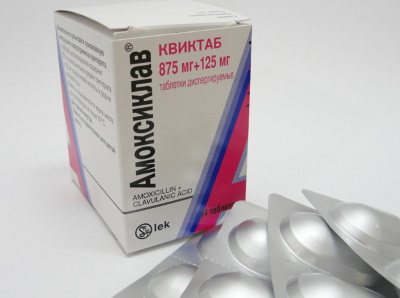
For excessive gas formation and bloating of the peritoneum, drugs like Espumisan are used. For pain caused by toxic and poisonous substances, Smecta is used. Duphalac is suitable for eliminating constipation and dyspepsia.
Antibiotics are taken in a 3- or 5-day course, 1 tablet per day, together with drugs containing lacto- and bifidobacteria. Espumisan and other similar medications, available in tablets and emulsion form, are taken in a daily dosage of 80 mg for adults and 40 mg for children.
Duphalac is a laxative for cleansing the intestines. Available in the form of sweet syrup. The doctor selects the dose individually. The syrup is suitable for children and adults.
Traditional methods
Such drugs can only be used for non-pathological pain and as an auxiliary treatment. Caraway seeds, from which a decoction is prepared - 2 tbsp, give a good clinical effect. vegetable ingredient is diluted in 400 ml of boiling water.
To improve digestive function, drink the product in small portions (30-50 ml) on an empty stomach once a day. If the acidity of the gastric secretion is reduced, it is recommended to drink freshly squeezed lemon juice.
Other methods
For chronic pancreatitis, supportive therapy is used to prevent pancreatic degeneration. The inflamed appendix is amputated, and if the placenta is separated, a cesarean section is performed.

For intra-abdominal pain, take No-shpu and other analgesics. Intestinal obstruction caused by fusion of the walls of the esophageal canal or hyperplasia is eliminated exclusively by surgical methods.
If the pain is caused by an umbilical hernia, you should not try to straighten the tissue yourself. You should seek medical help within 2 hours to avoid irreversible changes in anatomical structures.
Do's and Don'ts
If the doctor has determined that the causes of discomfort are characterized by an emotional state, then simple methods can be used to relieve it.
You need to lie down and relax, with the doctor’s permission, use “No-shpa” and other means that will relieve pain.
If you overeat, you can use activated carbon and other adsorbents, which will reduce pain in the navel area. If the pain does not stop within 3-4 hours, you need to go to the hospital.
Pain that appears as a result of malfunctions in the body can be muffled by applying bed rest, proper nutrition, and also large consumption of water.
There are other rules that also need to be followed, because you can’t always help yourself and the body on your own, so as not to harm.
While the reasons are unknown, the following is prohibited:
- When calling an ambulance and before its visit, it is prohibited to use medications that relieve pain. Using painkillers, the patient will not be able to explain how and what exactly hurts, in what area. Accordingly, the physician will not understand where localization occurs and what measures to take.
- Do not heat or cool the abdominal area.
- It is prohibited to use enemas in any form or manifestation.
- It is better to refuse food and water. If your mouth is very dry, you can drink, but in very small quantities, no more than a couple of sips.
By adhering to such rules, the doctor will be able to quickly find the causes and eliminate the pain.
How reading can help eliminate discomfort in the navel area
According to research and observations conducted by scientists, reading books has a positive effect not only on the spiritual, but also on the physical state of a person.
Reading aloud evokes in patients positive emotions and memories of a period of life without pain.
Thanks to this activity, they manage to distract themselves and forget about problems and illness. When reading, the brain sends "pain-free" signals to other parts of the person's body. As a result, the suffering of patients is reduced.
Preventive measures
To ensure that the abdominal cavity does not disturb and discomfort does not appear, it is necessary to adhere to general rules and monitor your health. For any type of disease, it is necessary to identify them in time and complete the course of treatment.
Every year you need to undergo a preventive examination in the hospital in order to detect abnormalities and pathologies that just appear in time. This way the treatment will be faster and several times easier.
By neglecting a routine examination of internal organs, a person can develop a certain disease that cannot be treated with medication. In this case, operations will be required.
A proper and balanced diet, light physical activity, giving up bad habits, and rest are important for the stomach.
It is necessary to avoid anxiety and stressful situations. All these tips will help reduce the occurrence of internal pain many times over.
Useful video
General information
Pain above the navel may be a sign of a serious illness. Often, determining the causes of pain above the navel is a very difficult task for the attending physician. In certain situations, even a consistent detailed study of the causes of pain is impossible. Often, a high-quality diagnosis and treatment prescription requires extensive experience of the attending physician, because sometimes the picture of the disease is incomprehensible.
Pain above the navel in diseases
Pain just above the belly button is usually associated with stomach problems. The following diseases may be among the culprits of this pain :
increased stomach acidity.
Persistent pain in this area indicates problems with the duodenum, pancreas and gall bladder.
of acute gastritis :
unpleasant sensations in the pit of the stomach;
The mucous membranes and skin have a pale tint , the tongue has a gray coating, and the mouth is dry. Pain can also occur at night, forcing the patient to wake up and take food and medications. The pain usually subsides within the first 30 minutes after eating.
Less specific, but common symptoms of peptic ulcer disease are:
heaviness after eating;
feeling of fullness in the stomach;
vomiting that brings relief;
loss of appetite, body weight;
Stomach cancer
The clinical symptoms of stomach cancer in the initial stages of the disease are unclear. Not only the patients themselves, but also their doctors often regard them as a manifestation of gastritis and, without conducting a full gastrological examination, limit themselves to prescribing appropriate medications.
At the same time, after carefully analyzing the complaints, you can detect a number of symptoms that are alarming regarding the diagnosis of cancer. The syndrome of minor signs, which includes a number of general and local symptoms, the identification of which gives reason to suspect the patient has stomach cancer . These include:
A change in the patient’s well-being, detected several weeks or even months before visiting a doctor and expressed in the appearance of causeless general weakness, decreased ability to work, and fatigue;
unmotivated persistent decrease in appetite or complete loss of it up to aversion to food;
phenomena of “stomach discomfort”: loss of physiological feeling of satisfaction from eating, a feeling of fullness in the stomach, even after a small amount of food, as well as a feeling of heaviness, bloating, sometimes pain in the epigastric region and above the navel, occasionally nausea and vomiting;
causeless progressive weight loss, accompanied by pallor of the skin, not explained by other diseases;
mental depression - loss of joy in life, interest in the environment, in work, apathy, alienation.
The duodenum is the first section of the small intestine, about 25 cm long, into which food from the stomach enters. Ulcers occur here more often than in the stomach, but pain in the duodenum is indistinguishable from gastric pain.
Pancreatitis
Pancreatitis is a whole group of diseases of the pancreas. , inflammation of the organ occurs but enzymes still do not cease to be released. But they do not enter the duodenum, as happens in a healthy person, but begin to become active in the gland itself. In this case, treatment can be carried out either with medications or surgery.
The main manifestation of pancreatitis is pain: in the right upper half of the abdomen - when the head of the pancreas is affected. Pain in the pit of the stomach and above the navel occurs when the body of the pancreas is predominantly affected, and in the left hypochondrium when the tail of the pancreas is affected. The stool becomes liquefied. The volume of stool increases. The stool has an unpleasant odor and a foamy consistency.
In some cases, a diet for chronic pancreatitis goes well with drug therapy. This is especially true for exacerbation of the chronic form. But it is worth remembering that this or that medicine should be prescribed only by an experienced specialist, after an accurate diagnosis.
Lump above the navel in an adult
Among abdominal hernias, peri-umbilical or paraumbilical hernias are often diagnosed. This protrusion occurs below or above the navel, which is why it is often confused with an umbilical hernia. This is a disease in which the abdominal organs go beyond their anatomical limits and protrude into the space near the navel along the midline.
The white or midline line is horizontal and it separates the right and left abdominal muscles. In adults, a supra-umbilical hernia is detected much less frequently than in young children; it occurs in 5% of cases of all abdominal hernias and is associated with great physical exertion.
The following internal and external factors can provoke the appearance of a protrusion above or below the navel in adults:
- strength sports, bodybuilding, jumping;
- chronic pathologies of the gastrointestinal tract or lungs;
- failure of metabolic processes, cachexia or, on the contrary, excess weight;
- poor healing of scars after abdominal surgery.
In children, this disease is associated with a violation of the formation of the aponeurosis, but it can manifest itself in adults after 40 years, when other gastrointestinal diseases occur that increase intrauterine pressure.
Signs and diagnosis of peri-umbilical hernia
The first manifestation of the pathology will be the appearance of a ball-shaped protrusion above the navel, which slightly protrudes above other tissues and gradually increases.
A hernia without complications is painless for an adult, and if there is excess weight, it is quite difficult to suspect it. The formed hernia is well palpated when palpating the area above the navel, but what is characteristic is that the umbilical ring is normal.
Very rarely, peri-umbilical protrusion occurs together with an umbilical hernia.
The initial signs of the disease are vague, there is no pain, and only a doctor can make an accurate diagnosis in the case of atypical localization.
The hernia forms gradually, first a preperitoneal lipoma appears, then a hernial sac forms, and high pressure bulges part of the organ along with the hernial sac through an expanded area of the anterior abdominal wall.
At the last stage, paraumbilical hernia in adults gives the following symptoms:
- A visually visible small ball above the navel, easily palpable, you can feel the presence of a hernial sac;
- When touched, the protrusion is painless and can move back into the abdominal cavity or go away on its own when the patient is relaxed and lies on his back;
- It is not uncommon to observe separation of the linea alba muscles;
- Dyspeptic disorders gradually develop: flatulence, nausea, heaviness in the stomach after eating, constipation;
- General malaise is typical for a complicated hernia in adults; there are symptoms of intoxication, bowel dysfunction, fever and acute pain at the site of the protrusion.
An alarming signal is severe pain along with nausea and vomiting, which indicates a complication of the hernia, and you should immediately call a doctor. The cause of the injury may be severe tension, heavy lifting without a support bandage, or severe coughing.
An adult is scheduled to undergo hernioplasty after undergoing diagnostics:
- Gastroduodenoscopy – examination of the abdominal organs and identification of accompanying diseases that may become contraindications to one of the surgical treatment options;
- X-ray of the abdominal cavity - shows the organ located in the hernial sac;
- Ultrasound diagnostics - reveals the contents of the hernia, its exact location, and allows you to assess the condition of nearby structures.
Treatment
Hernias of the white line can only be eliminated surgically, but conservative therapy is prescribed to maintain the condition of the internal organs and the patient’s well-being before and after surgery.
Even a small protrusion requires removal and suturing of the hernial orifice, since strangulation of an organ in the hernial sac can occur at any time and urgent surgery has a greater risk of postoperative complications.
The standard treatment option for a supra-umbilical hernia is hernioplasty.
The operation is carried out with suturing of the defect using the patient’s own tissues or an implant, but today the low effectiveness of tension hernioplasty (suturing with nearby tissues) has been proven and specialists guarantee successful recovery after installing an artificial mesh.
Before surgery to remove a supra-umbilical hernia, it is important to exclude infection and inflammation, therefore blood biochemistry and a urine test are prescribed.
Stages of standard hernioplasty for periumbilical hernia:
- Creating access to the hernial sac;
- Opening the hernia and assessing the degree of organ damage;
- Return of the organ to the abdominal cavity;
- Suturing the extended area of the white line and installing a mesh;
- Stitching.
Hernioplasty is not the most successful surgical option in terms of recovery after treatment. Rehabilitation is long and limiting physical activity is necessary for a year, as is dieting and avoiding stress. In the case of laparoscopic surgery, this period is reduced to several weeks.
Relative contraindications for surgery
The operation is not performed in the following cases:
- Pregnancy period - a woman wears a bandage, rests more, watches her diet;
- Inflammatory diseases - the patient is first treated for concomitant diseases, after which surgery is performed;
- Young children - the treatment of a child depends on his general condition and the choice of the parents; doctors recommend waiting up to 5 years, trying to remove the hernia conservatively, using massage, gymnastics, and following a healthy diet.
These are relative contraindications, after elimination of which it is necessary to undergo surgical treatment.
Rehabilitation
After hernioplasty, the sutures are removed a week later, during this time you need to follow a gentle diet, exclude diseases that provoke cough or intestinal disorders. The patient should regularly wear the support band during walks or light housework that requires bending, turning, or any abdominal strain.
Source: https://entsefalopatiya.ru/venerologija/shishka-nad-pupkom-u-vzroslogo/



